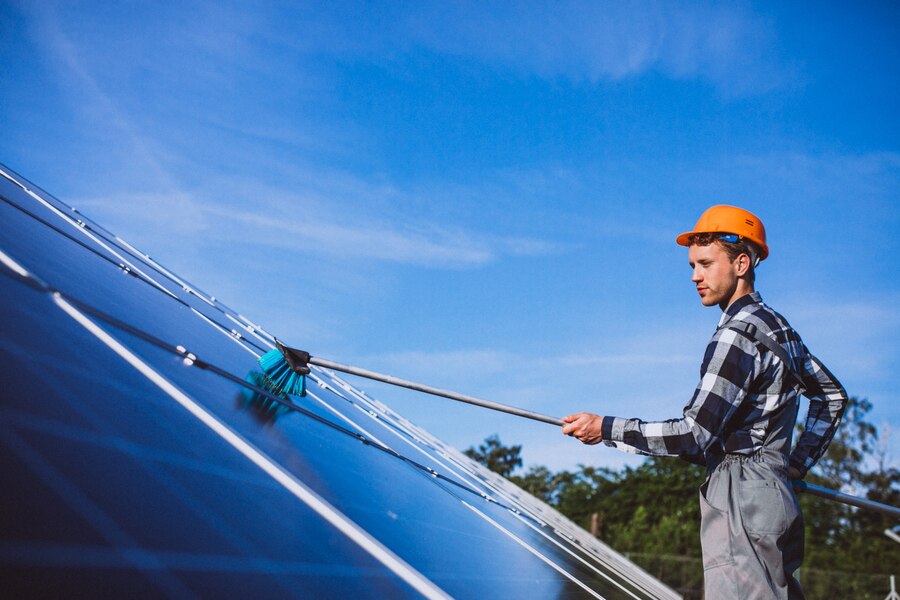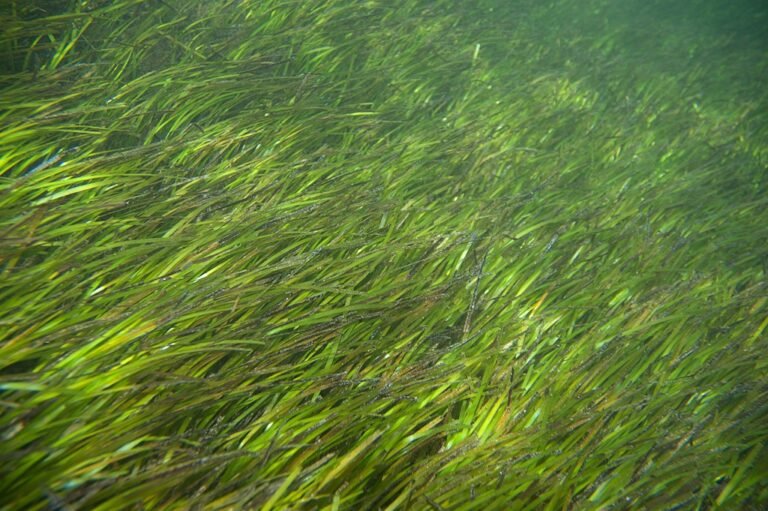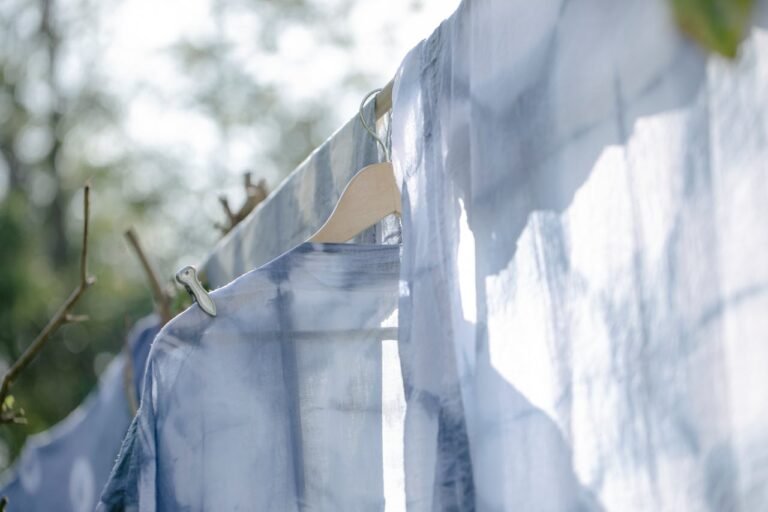How to Clean Solar Panels on a Roof: An Expert Guide
Solar panels are a great investment, helping you save money and reduce your carbon footprint. But here’s something most people don’t realise—dirty solar panels don’t work as efficiently. Think about it: would you expect a dirty window to let in as much sunlight as a clean one? The same logic applies to solar panels. Dust, bird droppings, and grime can block sunlight, reducing energy output by up to 50%, according to a study published in Sustainable Energy Research.
Many homeowners assume that rain does the job of cleaning, but in reality, rainwater often leaves streaks and mineral deposits, making things worse over time. If you live in a dry, dusty area or near pollution-heavy roads, your panels could be losing power without you even realising it.
So, how do you clean them safely without causing damage? And how often should you do it? In this guide, we’ll break it all down with practical cleaning methods, expert-backed advice, and real-life experiences. Whether you’re a DIY enthusiast or prefer professional help, keeping your solar panels clean is easier than you think—and it can save you money in the long run. Let’s dive in!

In This Article
- Understanding Solar Panel Dirt: What Causes the Buildup?
- When Should You Clean Your Solar Panels?
- The Safest Ways to Clean Solar Panels on a Roof
- Common Mistakes to Avoid When Cleaning Solar Panels
- Maximising Solar Panel Efficiency Beyond Cleaning
- Conclusion: Take Action and Keep Your Panels Clean
Understanding Solar Panel Dirt: What Causes the Buildup?
Before we talk about cleaning methods, let’s first understand what makes solar panels dirty in the first place. You might think, “It’s just a little dust—how bad can it be?” But dirt buildup can seriously impact your solar panels’ performance over time.
Common Causes of Dirt and Debris
| Source | Impact on Panels |
|---|---|
| Dust and Pollen | Forms a thin film, reducing sunlight absorption. |
| Bird Droppings | Blocks solar cells entirely, significantly reducing efficiency. |
| Pollution and Soot | Creates a sticky layer, especially in urban areas. |
| Leaves and Tree Sap | Blocks sunlight and may leave hard-to-clean residue. |
| Hard Water Stains | Forms mineral deposits if not cleaned properly. |
How quickly your panels get dirty depends on where you live. If you’re in a dry, dusty area, your panels will need more frequent cleaning than if you live in a rainy area. Coastal homes deal with salt buildup, while city dwellers may find pollution and soot reducing efficiency.
A little maintenance goes a long way in keeping your panels running at full power. Let’s dive into the best ways to keep them clean!
When Should You Clean Your Solar Panels?
A common question homeowners ask is how often solar panels should be cleaned. The answer depends on a few key factors.
If you live in a dry, dusty area—think Arizona or Nevada (in the US)—you might need to clean your panels every 2-3 months. Dust and sand settle fast, blocking sunlight and reducing energy production.
In rainy climates, like the Pacific Northwest, nature does some of the work for you. But rain doesn’t always wash off stubborn grime, so a twice-a-year check is still a good idea.
And then there’s visible dirt—bird droppings, pollen, pollution, or leaves. If you notice a layer of grime, it’s time to clean. A thick bird dropping can block an entire cell and cut efficiency by 30% or more!
One of the best ways to know if your panels need cleaning is to monitor your solar output. A sudden drop in energy production? Your panels could be dirty.
How Often Should You Clean Your Solar Panels?
| Factor | Recommended Cleaning Frequency |
|---|---|
| Dry, dusty, or smoggy areas | Every 2-3 months |
| Rainy or humid climates | Twice a year |
| Visible dirt or bird droppings | As needed |
| Energy output drops | Check and clean if needed |
Pro Tip: Install a solar panel monitoring system to track efficiency changes. If you see a dip in power generation, it’s a sign your panels need attention.
The Safest Ways to Clean Solar Panels on a Roof
Cleaning solar panels isn’t just about getting them spotless—it’s about doing it safely and effectively. Climbing onto a roof comes with risks, so taking the right precautions is essential.
Safety First: Precautions Before Cleaning
Before you even think about grabbing a hose, make sure you’re prepared:
- Check the Weather: Never clean your panels on a windy or rainy day. Wet surfaces can be extremely slippery, and strong winds can make balancing on a roof dangerous.
- Turn Off the System: Solar panels generate electricity, and water plus electricity is a bad mix. Always shut down your system before cleaning.
- Use Proper Gear: Wear non-slip shoes, gloves, and a safety harness if your roof is steep. It’s better to be over-prepared than risk a fall.
- Avoid Pressure Washers: It might seem like a quick fix, but high-pressure water can crack or strip the anti-reflective coating on your panels, reducing efficiency.
Real-Life Lesson:
When I was interviewing homeowners for this article, I met James, a friendly, do-it-yourself kind of guy who took great pride in maintaining his home. He had recently installed solar panels and wanted to keep them in top shape.
“I figured a pressure washer would make the job quick and easy,” he told me, shaking his head at the memory. “But the moment I sprayed that first panel, I heard a loud crack—my heart sank.”
What was supposed to be a simple cleaning session turned into a $500 repair bill. “I was trying to save time, but I ended up paying for it,” he admitted with a chuckle.
James’ story is a reminder that when it comes to solar panels, gentle cleaning is the way to go. A soft brush, mild soap, and a little patience can keep them spotless, without the risk of costly mistakes.
Method 1: The Simple Hose and Soft Brush Approach
If you’re looking for a quick and easy way to clean your solar panels, this method is a great starting point. It’s perfect for handling light dust, pollen, and everyday grime without requiring any fancy tools or chemicals. The best part? You can do it with things you probably already have at home.
What You’ll Need:
- A garden hose with low water pressure
- A soft brush with an extendable pole (to avoid climbing onto the roof)
- A bucket of warm water (skip harsh detergents—they can damage the panels over time)
Step-by-Step Guide:
- Rinse the Panels – Start by spraying your solar panels with a gentle stream of water from the hose. This helps to loosen and wash away the loose dust and dirt.
- Scrub Gently – Dip your soft brush into the bucket of warm water and, using light circular motions, scrub away any stuck-on grime. Be gentle! You don’t want to scratch the glass surface.
- Rinse Again – Once you’re satisfied with the scrubbing, give the panels another rinse with clean water to remove any lingering debris.
- Let Them Air Dry – Resist the temptation to wipe them down with a towel. Towels can leave lint behind, which might reduce efficiency.
Why It Works:
A 2021 study by Princeton University found that regular cleaning of solar panels in heavily polluted regions can significantly increase electricity generation by removing particulate matter. The study showed that manual cleaning can improve panel efficiency by 12-15% compared to those left to rely on rain alone. This is a significant boost, especially in areas with minimal rainfall.
Method 2: Using a Squeegee and Eco-Friendly Soap
For panels that have a bit more grime—think bird droppings, pollution buildup, or stubborn dirt—this method offers a more thorough cleaning. It’s still simple but adds an extra step for dealing with tougher messes.
What You’ll Need:
- A squeegee with an extendable handle
- A biodegradable soap solution (to prevent harming your plants and the environment)
- A soft sponge or microfiber cloth
Step-by-Step Guide:
- Mix the Solution – In your bucket, mix clean water with a few drops of biodegradable soap. Avoid harsh cleaners, as they can leave a residue or cause long-term damage to the panels.
- Apply the Mixture – Dip your sponge or microfiber cloth into the soapy water and gently scrub the panels. Pay extra attention to areas with bird droppings or stubborn grime.
- Squeegee It Off – Using your squeegee, remove excess water from the panels. This prevents streaks and ensures a clear surface for optimal sun absorption.
- Final Rinse – Give the panels a last rinse with clean water to wash away any remaining soap.
Pro Tip:
According to industry experts, leftover soap residue can attract more dirt over time, making your panels dirty again faster. That’s why a thorough rinse is crucial!
Method 3: Automated and Professional Cleaning
If you have a large solar array, panels in hard-to-reach areas, or simply don’t want to climb onto your roof, you might consider professional or automated cleaning options.
Your Options:
- Robotic Cleaners – Some high-tech solar panel cleaning robots can handle the job for you. These self-operating machines are ideal for commercial solar farms but can also be used for residential setups if you’re willing to invest.
- Professional Cleaning Services – A certified solar panel cleaning service can ensure a thorough and damage-free cleaning. They use specialised tools and cleaning solutions that maximise panel efficiency without causing harm.
Cost Comparison Table:
| Cleaning Method | Estimated Cost | Effectiveness |
|---|---|---|
| DIY Cleaning | $0 – $50 | High (if done correctly) |
| Professional Service | $150 – $300 | Very High |
| Robotic Cleaners | $500+ | Long-term, automated solution |
When Should You Call the Pros?
If your panels are on a steep roof, in hard-to-reach locations, or if you simply don’t have the right safety gear, it’s worth considering professional cleaning. It ensures safety and a deeper clean that could further enhance energy output.

Common Mistakes to Avoid When Cleaning Solar Panels
1. Using Abrasive Materials
It might be tempting to grab a tough sponge or a scouring pad to scrub off stubborn dirt, but resist the urge. Solar panels have a protective coating that can be scratched easily. Scratches don’t just affect the appearance—they reduce the panel’s ability to absorb sunlight effectively. Instead, use a soft brush or a microfiber cloth for gentle cleaning.
2. Cleaning During Peak Sunlight Hours
A hot, sunny day might seem like the perfect time to clean, but it can make things worse. When you spray water onto hot panels, the sudden temperature change can cause stress on the glass, and the water evaporates too quickly, leaving streaks and mineral deposits behind. It’s best to clean early in the morning or in the evening when the panels are cool.
3. Ignoring Safety Precautions
Climbing onto a roof is risky, and many accidents happen when people aren’t properly prepared. Falls can lead to serious injuries. Always use a safety harness, wear non-slip shoes, and, if possible, have someone nearby to assist. If the roof is too steep or hard to access, consider hiring a professional instead of taking unnecessary risks.
4. Using Hard Water
If your tap water contains a high mineral content, it can leave behind stubborn deposits over time. These minerals create a cloudy layer on your panels, reducing their ability to capture sunlight. To avoid this, use distilled or deionised water for rinsing, or wipe panels dry with a squeegee to prevent buildup.
Maximising Solar Panel Efficiency Beyond Cleaning
Besides regular cleaning, follow these extra steps for peak performance:
- Trim Nearby Trees: Overhanging branches can cast shadows on your panels, reducing efficiency. They can also drop leaves and debris, leading to more frequent cleaning needs.
- Check for Damages: Regularly inspect your panels for cracks, loose wiring, or corrosion. Small issues can turn into costly problems if left unaddressed.
- Install Bird Deterrents: Birds love to nest under solar panels, but their droppings and nesting materials can cause major efficiency problems. Installing mesh barriers or bird spikes can help keep them away.
- Monitor Energy Output: Keep an eye on your system’s performance using a solar monitoring app. A sudden drop in energy output can signal dirt buildup or technical issues that need attention.
Conclusion: Take Action and Keep Your Panels Clean
Clean solar panels mean higher efficiency, longer lifespan, and better savings. Regular maintenance is a small effort that ensures you get the most out of your investment.
Actionable Steps to Get Started:
- Inspect your solar panels today for dirt buildup.
- Choose a cleaning method based on your needs and safety.
- Set a reminder to clean your panels at least twice a year.
By taking a proactive approach, you’ll maximise your solar power and contribute to a cleaner, more sustainable future.







